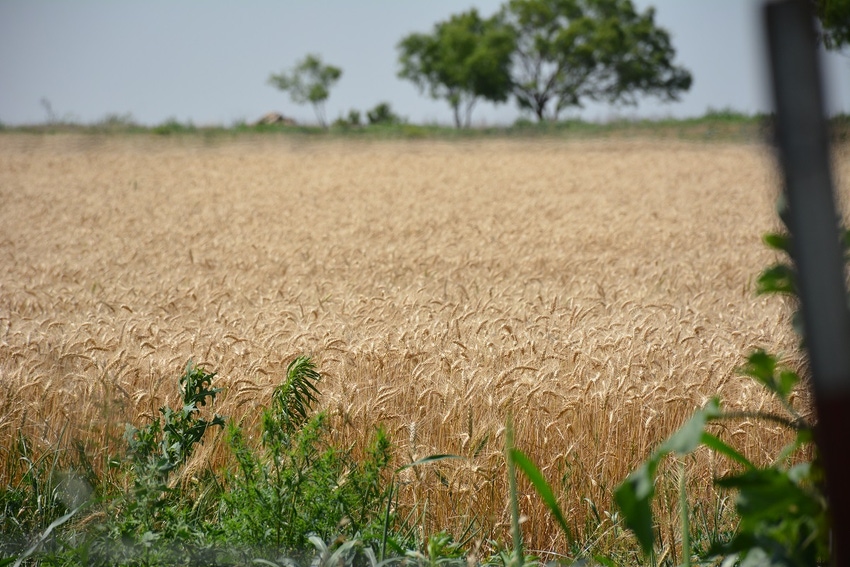March 22, 2017

Wheat prices remain below $4.00 because of Russia, the Ukraine, Kazakhstan, Argentina, a host of small wheat producing countries, and the relatively high value of the U.S. dollar. Data show that about half of the decline in wheat prices is due to increased competition, and the other half is due to the relatively high value of the dollar.
Over the next few years, the situation could worsen. However, some Oklahoma and Texas wheat producers will compete in this market and make a profit.
In 2007, the world average production per acre was 42 bushels, and the five year average yield per acre was 42 bushels. In 2016, the world average yield was 50 bushels, and the five year average was 48 bushels per acre. The average world per acre yield was 49 bushels in both 2014 and 2015, and 50 bushels in 2016. An 8 bushel per acre increase occurred between 2007 and 2016.
In 2007, Oklahoma’s five year average yield was 32 bushels per acre. In 2016, the five year average was 30 bushels, 2 bushels per acre less than the 2007 average.
In 2007, the Texas five year average yield was 30 bushels per acre. In 2016, the five year average was 31 bushels. The five year per acre average yield is 1 bushel per acre higher than in 2007.
In 2007, the world five year average harvested acres were 529 million. In 2016, the five year average had increased to 546 million acres.
Oklahoma’s five year average harvested acres declined from 4.0 million acres in 2007 to 3.3 million in 2016. Texas’ harvested acres declined from 3.8 million acres to 2.8 million acres.
INCREASED COMPETITION
Between 2007 and 2016, Russia’s five year average harvested acres increased from 56.4 million to 60 million. Their average yield increased from 29 bushels per acre to 34 bushels, and production increased from 1.6 billion bushels to 2.0 billion bushels.
Ukraine’s harvested acres increased from 13.8 million to 16 million, and yields increased from 38 bushels per acre to 51 bushels.
Add higher quality, improved storage, and improvements in transportation and shipping facilities to this increased production, and you have increased competition. Russia, Ukraine, and Kazakhstan’s exports increased from 643 million bushels in 2007 to a projected 1.94 billion bushels in 2016/17.
Between 2007 and 2016, U.S. wheat exports declined from 1.26 billion bushels to a projected 1.03 billion.
Russia, Ukraine, Kazakhstan, and Argentina all have lower production costs per bushel than U.S. hard red winter wheat producers. Australia’s and Canada’s costs of production are comparable to the U.S.
Australia produces hard white wheat that is good for bread flour and is also good for pasta. Hard red winter wheat competes well in the bread flour market, but not in the pasta market.
LOWER ARGENTINE PRICE
The president of Argentina removed a 25 percent export tax on wheat, which effectively lowered the price of Argentine wheat on the export market by 25 percent.
Between May 2014 and March 2017, the index of the value of the U.S. dollar against other currencies increased from 0.80 to 1.0, which effectively increased the price (cost) of U.S. wheat by 25 percent. The Oklahoma and Texas average wheat price for the 2013/14 wheat marketing year (June 2013 through May 2014) was about $7.00.
That figure implies that Oklahoma and Texas wheat prices could be $1.75 higher without the 25 percent increase in the value of the dollar.
The U.S. hard red winter wheat export market has changed. Producers who survive and make a profit producing wheat will be those who use technology and production practices that result in higher yields with lower costs.
About the Author(s)
You May Also Like






